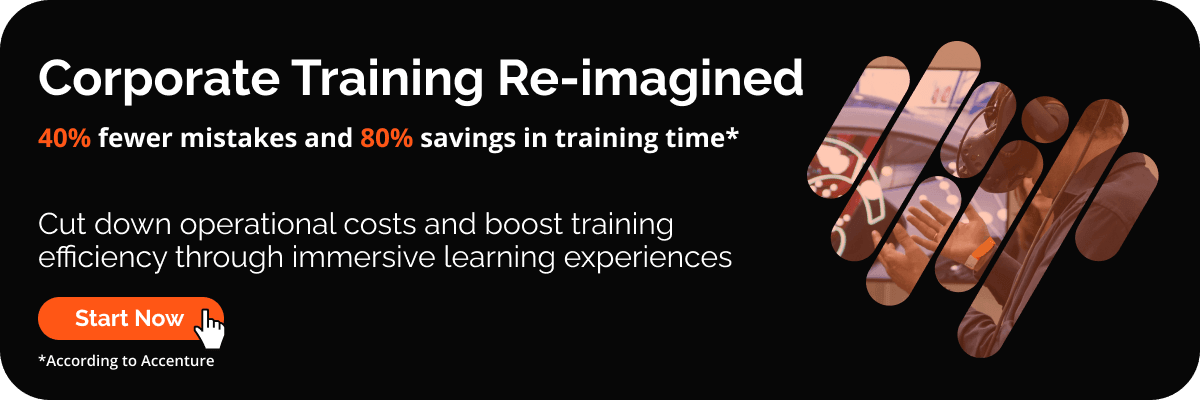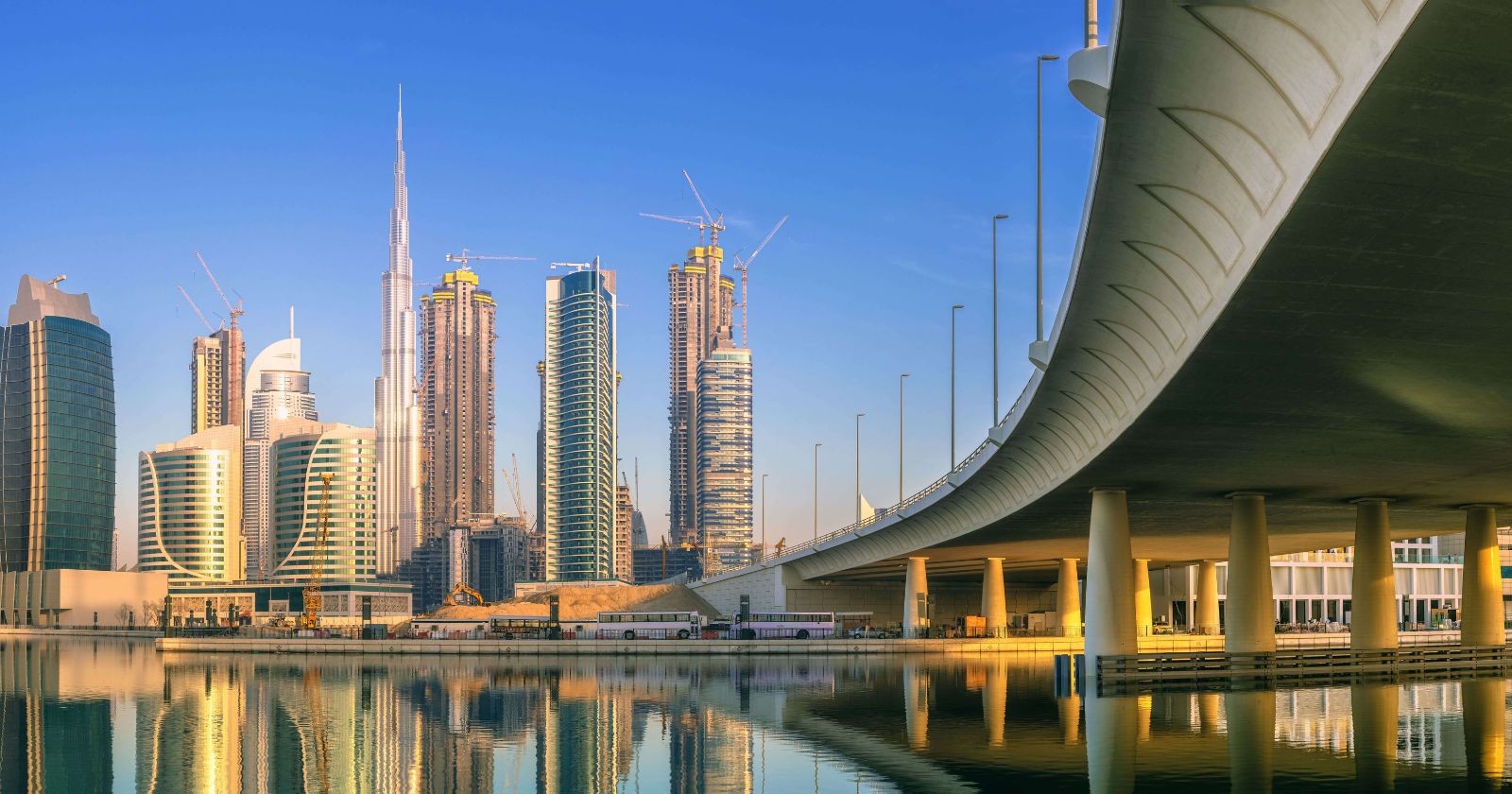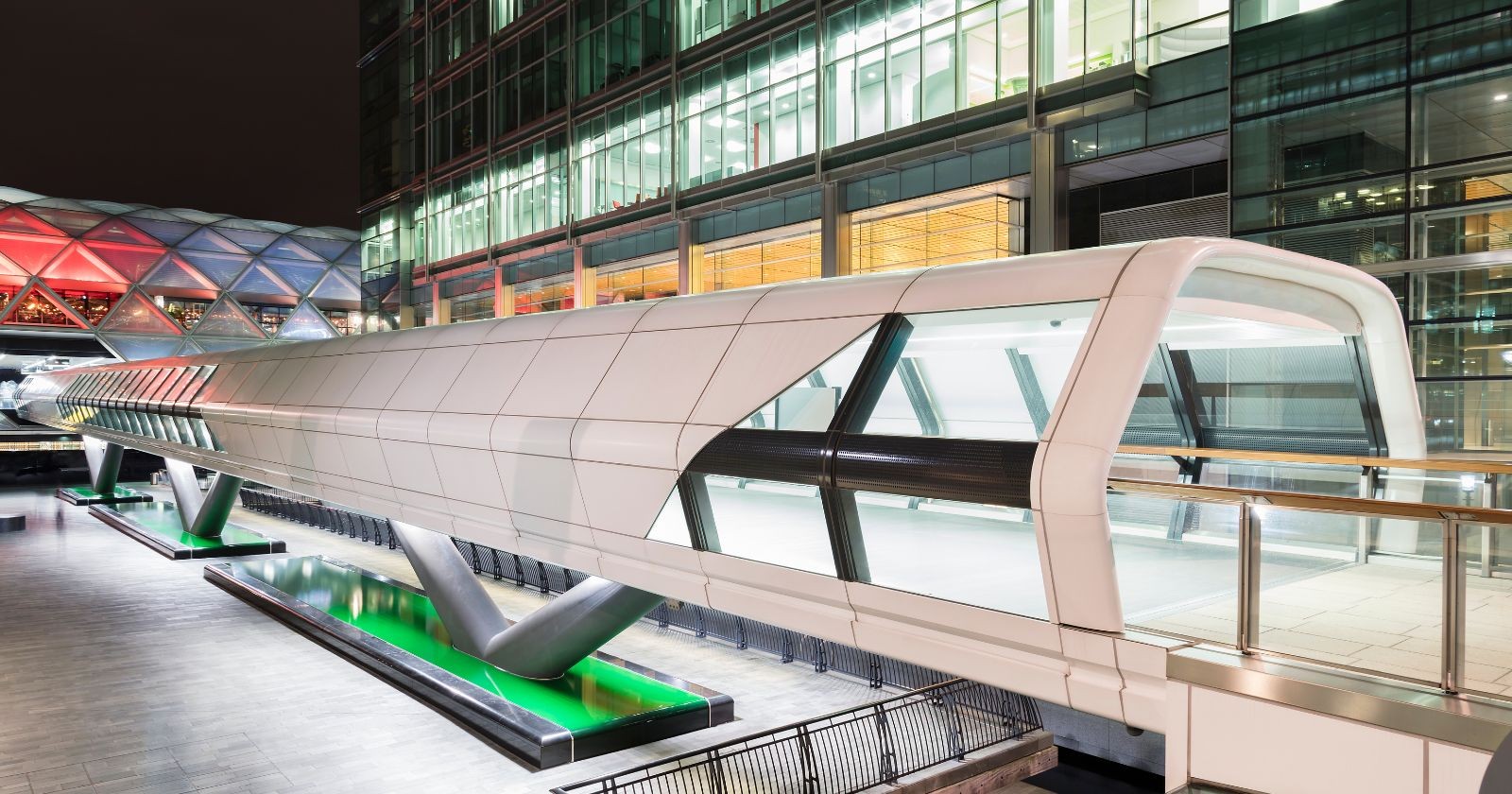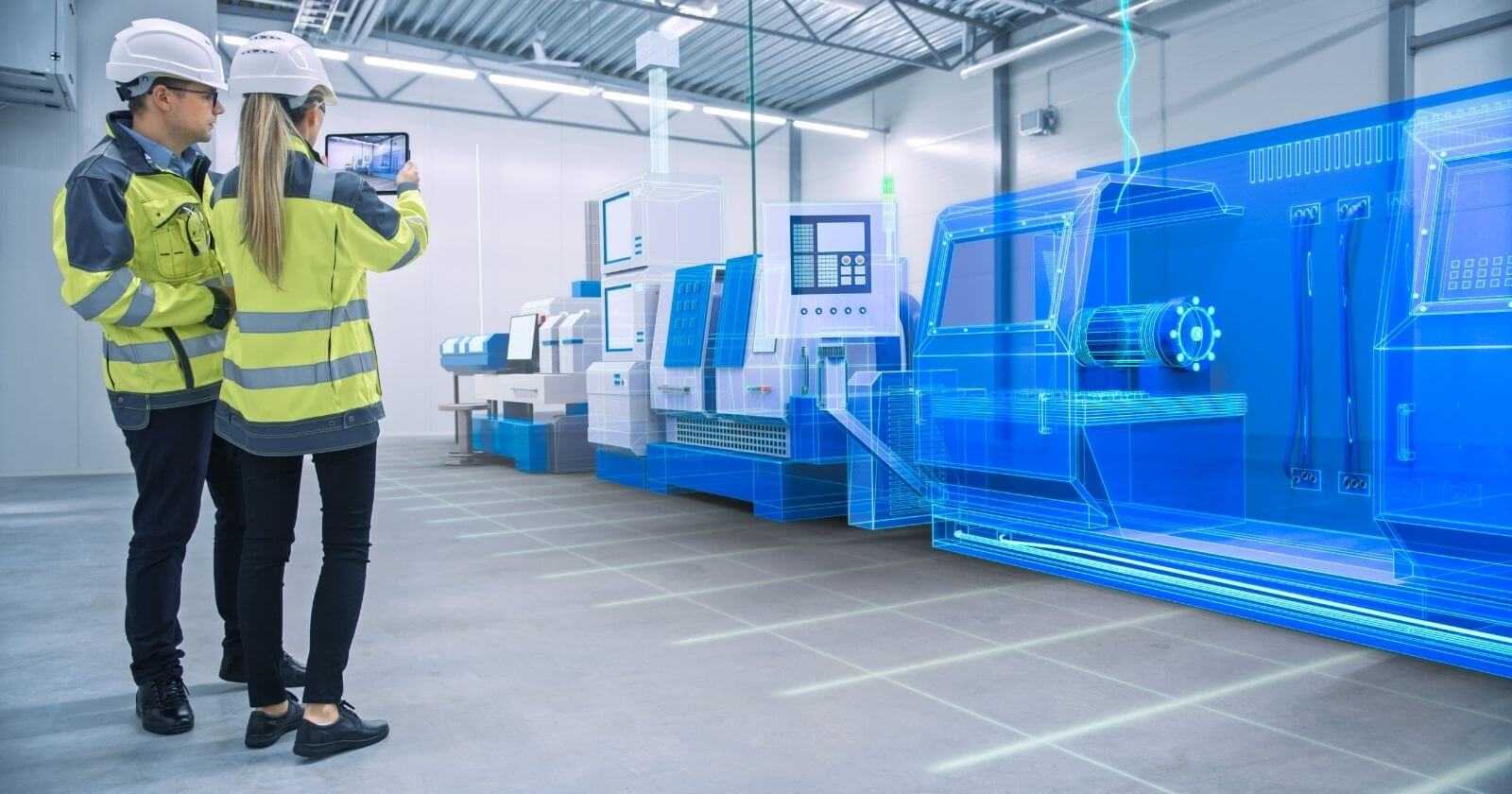How do you maximize the chances your Virtual Design and Construction (VDC) project delivers the expected value on schedule and within budget? Much like manufacturing, automotive, aerospace, or any other complex industry, construction initiatives carry the inherent risk of straying off course, leading to delays and cost overruns. A study by McKinsey reveals that 98% of construction projects go over budget and 77% face delays.
Things may often go wrong without proper planning. VR development has the potential to reshape how VDC projects are visualized, collaborated on, and ultimately delivered.
So, how can VR development ensure that your construction project aligns with your expectations, and what are ways to use it in the VDC initiatives? What can virtual reality technology offer except better collaboration among Architecture, Engineering, and Construction (AEC) professionals? Keep reading, and you’ll find out everything about VR in construction and see examples of how it’s used in VDC projects.
What Is Virtual Design and Construction (VDC): An Overview
The term “Virtual Design and Construction” (VDC) began to emerge in the late 20th century. Fundamentally, VDC stands for a way of running construction projects that combines traditional methods with digital tools to improve how the future building designs are planned, organized, and managed. The primary concept driving VDC is to facilitate open communication among team members to foster a cohesive understanding of each project and collectively shaping a shared vision.
The completion of the virtual design project is impossible without these 3 elements:
- Integrated Concurrent Engineering (ICE) is a strategy that brings together the coordinated effort of different professional groups simultaneously by applying integrated technologies and systems to optimize the design and construction processes. By leveraging ICE, AEC teams recognize and address building’s structure inconsistencies early thereby reducing delays.
- Building Information Modeling (BIM) is the comprehensive procedure of generating and overseeing data for a building that involves utilizing a model run on a cloud or premise infrastructure. BIM harmonizes organized, multidisciplinary data to generate a 3D model throughout its entire lifespan, encompassing stages such as conceptualizing, building, and managing.
- Product Production Management (PPM) entails organizing and supervising every element of the procedure required to create an asset, spanning from its initiation to completion. This generally involves activities like conceptualizing product design, organizing materials, overseeing work procedures, and tracking gains to guarantee smooth functioning.
Since VDC saves approximately 30% of the total budget AEC companies spend on the correction of faulty or inaccurate builds, it’s not surprising that its popularity is growing. In fact, it’s predicted that BIM market size will increase from $8.12 billion in 2023 to $14.89 billion in 2027. By now, the virtual design and construction approach is used in AEC, oil & gas, and manufacturing industries.
Now, let’s explore the purpose of VR development in construction management processes.
The Importance of VR in Virtual Design and Construction
Let’s start by understanding the basics. VR immerses users in a computer-generated interactive environment and can be accessed through VR headsets (Microsoft HoloLens, Magic Leap, HTC Vive, Oculus Rift, and others). On the other hand, VDC utilizes virtual simulations of the building structure and systems. The incorporation of the BIM 3D model further enhances the depth of information that can be included in the virtual design engineering.
When merging VR development with VDC, you view and adjust a digital copy of the architectural project in a virtual shared space. AEC team steps into a simulated building for inspection of architectural, structural, and MEP components in drafted plans.
Read also: Digital Twin Development Benefits and Costs
Learn ways digital twin technology can update your businesses
The main use cases of virtual reality in construction include:
- Building Design Planning
The core idea of custom VR development services here is to view and test the planned design concept. For instance, you can create a starting version of a building’s 3D model and place it to examine if the size and shape of the plot or terrain is suitable for your project.
Another scenario of VR in construction application is construction project planning and coordination. Virtual reality enables project managers to visualize construction sites, facilitating strategic planning for logistics and resource management.
- Training and Education
VR simulations are characterized as controlled spaces where workers can delve into lifelike scenarios and practice tasks such as equipment operation, safety procedures, and workflow protocols in a risk-free setting. With a well-developed training VR simulator, there’s no need for expenses related to travel, materials, and instructors. Construction operators can launch educational applications from anywhere and at any time.
- Site Management
There are several ways to enhance construction site management with virtual reality technology. For example, you can develop a site logistics simulation. It will allow AEC managers to simulate the movement of materials, equipment, and personnel within the virtual environment to identify potential bottlenecks or conflicts.
Resource optimization and inventory monitoring are additional applications of VR in managing construction sites. For example, digital twins of machinery enable AEC managers to oversee their usage and servicing requirements.
Virtual reality technology isn’t the same as it was a decade ago. It goes beyond the entertainment sector and conveys extended advantages to different industries including building initiatives. Apart from the widely favored VR applications in construction mentioned earlier, VR solutions can also be employed to enhance designs presentations to clients or streamline quality control processes.
A Closer Look at the Benefits of Virtual Reality in VDC
One key advantage of the VDC solution over the traditional approach to construction is better communication, as it’s often a challenge to create a common vision of the project among the participants. The virtual reality here acts as a tool that helps to easily visualize and view the construction plans. Yet the value of VR development in virtual design and construction extends beyond improved collaboration between stakeholders, including:
Avoiding Design Flaws at the Design and Engineering Stage
Years ago, stakeholders reviewed the structure of the building with the help of 2D drawings on a PC screen. However, this method failed to convey the true sense of space and layout.
By immersing viewers in a 3D architectural visualization, virtual reality allows them to experience the design from their own perspective. This is crucial in clash detection that might be overlooked in a 2D representation. For instance, in a hospital project, VR app helps AEC professionals understand how nurses and medical staff will move through the space. This ensures that the building plan aligns with practical requirements for patient care and monitoring.
Examining the BIM Model in a Life-Like VR Platform
Stakeholders can virtually walk through the entire site structure, gaining insights into the scale, proportions, and spatial relationships. This approach is particularly advantageous during the design development phase, allowing architects, engineers, and clients to collaboratively refine the project in a realistic virtual setting.
The best thing is that you can connect your BIM 3D model with the VR platform for seamless data exchange that is stored in the Common Data Environment (CDE). This ensures that any modifications made during the VR examination are synchronized with the BIM model.
Improving Facilities Management and Operations
We’ve already explained the value of VR development at the planning and design stage helping AEC enterprises facilitate adjustments to plans before actual construction starts. But we also can’t fail to mention that virtual reality construction allows you to avoid some of the expensive building systems’ testing.
Virtual inspections also offer a safer way to review whether the building meets all industry requirements and stays ergonomically effective. This is because there is no need for physical assessment in hard-to-reach or hazardous areas.
On top of that, digital simulation is a great assistant for communicating the BIM execution plans to clients. Through connected VR solutions and devices, your customers can experience and understand a complex building structure and “hidden” systems such as HVAC (heating, ventilation, and air conditioning), plumbing, and electricity better.
How to Use Virtual Reality in BIM Design?
When speaking about VR in virtual design and construction services, the main interaction and integration takes place precisely with the BIM. This is explained by the fact that BIM acts as a reservoir for information about digital design, documentation, and depiction of building & infrastructure plans. Therefore, before incorporating VR features into the VDC platform, AEC companies create a comprehensive 3D BIM model.
Typically, BIM development involves the use of CAD technology such as AutoCAD or ArchiCAD. Well-developed BIM model includes parameters of architectural design, structural characteristics, engineering systems, and other key data, enabling the creation of a complete object description of the building.
For further VR-powered collaboration of engineering and construction professionals, you’ll need compatible hardware and software to convert your BIM model into a VR. Examples of software for the export of a BIM model into formats supported by VR systems include:
- Unity Reflect
It integrates with BIM programs such as Autodesk Revit, supporting ongoing BIM projects. Since Unity Reflect operates on Unity, it provides an intuitive experience for developers involved in the VDC project. This software delivers real-time updates of information extracted from BIM models and facilitates a high level of interactivity.
- Revit Live
Revit Live is a solution created for Autodesk Revit and used to transform BIM models into virtual tours and presentations. It operates in real-time, enabling users to interact with the model immediately after changes are made.
- Enscape
Enscape is a rendering and visualization application that can integrate with various BIM platforms (e.g. Revit, SketchUp, Rhino, and ArchiCAD). Due to its intuitive interface and real-time capabilities, Enscape becomes a great tool for creating VR data visualizations without the need to export the BIM model into a separate format. Known for its high-quality images, Enscape offers realistic VR tours and helps deliver impressive virtual presentations.
- Unreal Engine
Unreal Engine offers great flexibility and can work with various BIM formats. Some developers may create plugins or integrations for specific BIM programs, while for others, a preliminary export of the BIM model into formats supported by Unreal Engine may be necessary. Unreal Engine is renowned for its capabilities in realistic graphics and provides a wide range of programming possibilities in VR.
Read also: How to Save Money on a Web Project for Businesses
Learn how to select the best tech stack for your web solution
It’s important to mention that when utilizing Unity or Unreal Engine in certain instances, you might need an additional tool to integrate the BIM model into virtual environments. These can be additional plugins or applications – Autodesk Navisworks, Trimble Connect, and others.
Finally, before working with the converted VR-based 3D design, it’s better to optimize it. By this, we mean eliminating redundant geometric details, enhancing visual quality by applying texture maps, and implementing Level of Detail (LOD) to automatically adjust details based on the viewing point.
Challenges of Implementing VR in Virtual Design and Construction
The latest tech advancements make one thing clear: VR-infused VDC platform is not a far-off dream; it’s here, and it’s already being used in the day-to-day operations of AEC businesses. To help you make the most out of VR development in your virtual 3D designs, review the following challenges that may arise and our viewpoints on mitigating them.
The Need for Powerful Infrastructure
The first thing to remember is that you’ll need robust hardware to run VR solutions and smoothly operate BIM models. VR simulation demands a significant amount of computational resources to create realistic virtual environments. The higher the quality of VR, the more computing power is demanded.
To make the most of VR in virtual design and construction, it’s crucial to have a reliable and high-speed Internet connection. This is because BIM models can be quite large, necessitating swift data exchange between the user and the server. A slow or unstable internet connection can lead to delays in displaying real-time changes, impacting productivity and the overall quality of the virtual experience.
Read also: Budget-Saving Strategies to Optimize Your IT Infrastructure
Discover the best DevOps practices that help to reduce IT infrastructure costs
Compatibility Issues Between BIM and VR Solution
The challenge arises from the distinct differences in data formats, architecture, and interaction protocols between BIM and VR environments. This leads to problems such as data loss, incorrect object rendering, and disruptions in user convenience, complicating the use of VR for constructing high-quality interactive virtual environments.
To prevent such difficulties, VR software development companies for VDC projects create a unified interface that is easily integrated with various BIM platforms. Namely, this includes the development of standardized data exchange protocols that would eliminate differences in data formats and architecture. Measures like enhancing data processing algorithms and optimizing object rendering in the virtual space prevent data loss and incorrect 3D rendering.
Data Security and Privacy
Custom VR solutions typically rely on cloud storage and hosting, posing potential data security issues for AEC enterprises implementing them in their VDC platforms. The reliance on a simple authentication system based on login IDs and passwords poses another significant data security challenge.
Once inside the system, the attacker can access sensitive data embedded in the virtual mock-up. This information includes details related to high/low voltage, fire safety, video surveillance, air conditioning, and ventilation. The compromised data provides the attacker with a comprehensive understanding of the building’s functioning, potentially enabling theft of building plans or the illicit sale of data to external entities. This underscores the need for robust cybersecurity measures, including server redundancy and advanced authentication protocols, to mitigate the risks associated with data security in VDC scenarios.
By preventing difficulties of using VR in virtual design and construction listed above, AEC corporations not only ensure well-organized and secure collaboration but also streamline the design process and improve decision-making processes.
Advanced Features of VR for Design Review Meetings in VDC
When it comes to VR in construction, there is a set of features without which a virtual construction solution won’t bring any benefit. Specifically, these include the creation of detailed virtual objects of building infrastructure, the ability to test various scenarios of interaction inside the building, and so on.
Yet, for a really established collaboration among AEC experts in virtual design, it’s worth implementing extra features.
- Live Annotation Tools Integration
One major benefit of integrating these tools is enhanced communication among stakeholders involved in the virtual design and construction procedures. This means users can actively engage with a BIM 3D model of a building in real time. Namely, add comments, annotations, and markups directly to the digital design. This feature eliminates the potential for misunderstandings or delays that can arise when sharing information through alternative channels.
Live annotation tools connect with VDC solutions through an extended API. You can also create a custom speech recognition solution for converting voice commands into text annotations when leaving comments in your 3D project.
- Multi-User Interaction
BIM collaboration always requires multi-user communication within a building’s design. To make it possible in the virtual environment, you’ll need to develop 3D avatars.
Software development companies apply the version control data synchronization method to provide multiple-user accessibility. When a user submits their alterations to the central repository, the version control system adeptly incorporates and disseminates these modifications to all users. Version control not only makes it easier to integrate changes but also keeps a detailed record of revisions, allowing unrestricted access to previous file versions. Stakeholders can modify 3D designs without causing disruptions to the tasks of their peers.
- Spatial Audio and Voice Commands
Spatial audio uses virtual reality and acoustic modeling technologies to create a sound environment that reproduces a realistic soundscape in space. By applying signal processing algorithms, the system can accurately determine the position of sound sources relative to the user in space.
Voice commands, in turn, allow AEC professionals to interact with the virtual environment through voice recognition and natural language processing technology. With integrated artificial intelligence capabilities, the system can recognize complex commands and instructions, simplifying the workflow. For example, an engineer can measure the distance between two points, draw up plans, or change project parameters using only his voice.
- In-VR Design Editing and Collaboration
This feature is based on the use of VR headsets and specialized software. These are real-time 3D development, depth processing algorithms, and adaptive interaction interfaces. To ensure consistent user engagement, construction enterprises also employ techniques for 3D rendering optimization and data transmission stability over the network. During the collaboration, participants can communicate via virtual audio chats and exchange comments on 3D architectural infrastructure. Real-time visualization of the changes made helps engineers, architects, and other project participants understand the evolving design.
While every VDC solution is unique, these are some advanced features that will make design review meetings more effective. A BIM 3D model that combines integrated annotation tools with multiple user interactions will enable you to prevent any misunderstandings while working with virtual buildings. It’s a good idea to examine every facet of your project and then use a VR development services company to find what else can be added to the VDC solution and guarantee you’re on the correct course.
3 Bright Examples of VR-Based BIM Projects
Let’s now look at some of the most vivid examples of buildings that were built through the application of VR-driven BIM projects.
#1. The Burj Khalifa
Building Information Modeling played a crucial role in the erection of Burj Khalifa, the world’s tallest skyscraper. Utilizing the ETABS (BIM software), AEC experts crafted the mathematical representation of the future building. The conceptualization of the building in VR helped to oversee the complex structure of the tower’s geometry, refine its architectural composition, and facilitate seamless coordination among the stakeholders involved in the project.
#2. The Shard
The building of London’s renowned landmark employed GEOBIM solutions throughout its entire building process. The implementation of GPS and GPR techniques, along with advanced components such as laser scanning, 3D BIM services, virtual reality, and 4D project management tools, enhanced several construction processes. Namely, they were instrumental in optimizing productivity, while also facilitating effective management and sustainable maintenance of the iconic structure.
#3. Crossrail Project in London
London’s Crossrail infrastructure, initiated in 2009, is another great example of digital construction. BIM implementation streamlined the creation of virtual assets and integrated datasets across all life-cycle stages. The most prominent benefits of implementing VR BIM included reduced wastage by minimizing clashes, decreased program risk through 4D analysis, and improved performance by linking models into GIS mapping.
These examples serve as inspirations to get your virtual design and construction project started. But, to build what your audience wants and needs, you’ll likely need to test some different ideas out, measure their success, and then refine your goals as you go.
Visartech Insights on Software Development for VDC Projects
Based on our experience in VR development and working with building information models, we will highlight a few things that can help you improve your VDC platform.
Consider Working With Open BIM
Open BIM involves utilizing open standards like Industry Foundation Classes (IFC), enabling different programs and VDC solutions to interact without being limited to a specific software choice. The main goal of this method is to facilitate the information exchange between various applications and ensure interoperability within the BIM model.
It not only creates a standardized communication framework for procedures but also ensures the enduring relevance of project data. In contrast, closed BIM leans heavily on software-generated data, adopting a more secluded stance in the realm of data analysis and data-driven design methodologies.
Integrate BIM With ERP System
In the AEC sector, ERP isn’t typically considered the primary data source for construction workflows, as industry professionals often rely on BIM. However, ERP systems play a crucial role in coordinating day-to-day activities within an enterprise.
The BIM approach also requires a documented intervention, and an integrated workflow using Excel with a virtual building solution is now considered obsolete. By integrating BIM design with an ERP system, you can optimize financial management, which is particularly beneficial in competitive bidding scenarios. While BIM handles the data aspect of modeling essential metrics, ERP systematizes the entire project workflow in a well-documented format.
Another benefit of BIM and ERP integration is better resource allocation. In this case, BIM provides detailed information about the materials used and their properties in the project, and ERP allows efficient management of stocks, orders, and supplies of materials.
Implement MR for On-Site Assistance
The broader way to strengthen your VDC platform by innovative technologies is to appeal to Mixed reality (MR) which blends VR and AR technologies. It can occur as a standalone additional functionality within specialized software for construction projects or as part of a BIM system. This means that virtual objects and data generated from the BIM model can be seamlessly incorporated directly into the MR environment, providing users with the ability to interact with three-dimensional reconstructions of construction objects in real-time and on-site.
For example, MR assistants can offer step-by-step visual guidance for assembly or installation, helping workers grasp intricate details for precise execution. These systems also allow workers to visualize concealed infrastructure elements (e.g. electrical or plumbing systems) through augmented reality overlays, aiding in precise maintenance or troubleshooting.
Invest in High-Performance GPU and CPU
The demand for realistic and detailed virtual construction environments necessitates powerful GPUs capable of rendering complex 3D models with high fidelity. This ensures that AEC experts can visualize projects in a manner closely mirroring reality. Robust CPUs are also essential for handling the intricate computations required for simulations, physics-based modeling, and real-time rendering.
The Visartech dedicated development team takes into account all of these aspects and many others when developing custom VR construction solutions. To ascertain the initial steps in the development process or identify areas for improvement, it’s worth consulting with an appropriate provider, who you should primarily choose before starting the development.
Your Next Step
In case you find yourself navigating the landscape of virtual construction services and wish to unlock its complete capabilities, embracing VR development is the key. Through the integration of bespoke VR solutions into your planning and building procedures, you stand to transform collaboration, improve visualization, and optimize VDC workflows.
Embarking on this journey may seem daunting, but fear not. As you contemplate integrating VR within your VDC practices, consider consulting with an experienced VR development company. Its experts are skilled enough to navigate you through the nuances of virtual reality implementation, ensuring a seamless integration designed to meet your individual preferences.







